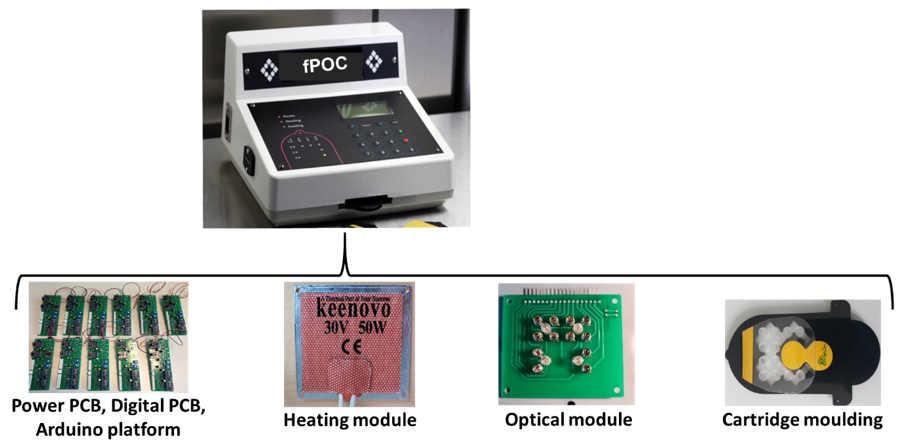Research
The development of a Point-of-Care device, the fPOC, for the rapid identification of Avian influenza is the first objective of the project and crucial for the project success. The device is based on the fluorescence detection of virus RNA using LAMP (Loop-mediated isothermal amplification) technology.
The LAMP reaction happens inside a well, which is part of a specially designed cartridge containing 12 identical wells, preloaded with the LAMP reagents. The cartridge also contains four pyramidal shaped structures that each distributes the excitation light to four adjacent wells. As the reaction proceeds, the fluorescence signal increases, and it can be measured by photodiodes located above each well.

Left: Schematic of the measuring principle for
the fPOC. The LED shines light through an excitation filter onto the pyramidal
structure. The pyramid guides the light onto four adjacent wells (as shown in
b), where the LAMP reaction takes place. Fluorescence is measured through an
emission filter by a phototransistor placed on top of the well. Right:
Schematic showing the location of the wells and the four pyramidal structures.
The colors indicate the excitation and emission filters.

The fPOC consists of several hardware modules
to control power, heating, optics and the cartridge.
The fPOC can be used as a stand-alone instrument, where everything is programmed as firmware and where the user can get simple feedback through the instrument in the form of colored lights and screen results. However, it is also possible to extract more information by connecting the instrument to a PC and running the dedicated PC application, developed in Python. Data can also be saved on a memory card inserted in the instrument.
In the project, 6 fPOC instruments and 500 cartridges are fabricated and will be distributed to the partners for testing. The project aims at commercializing the device, once it is validated.